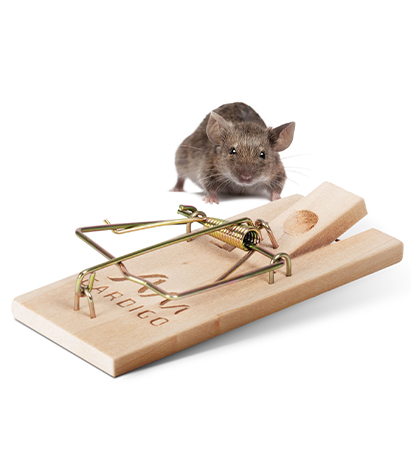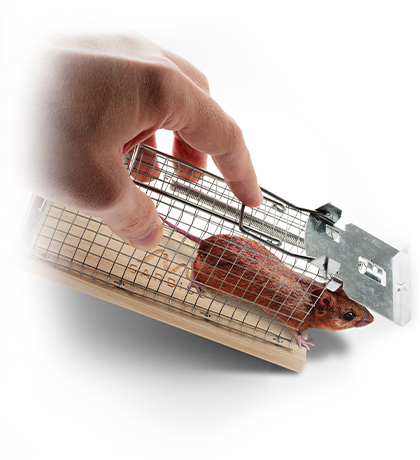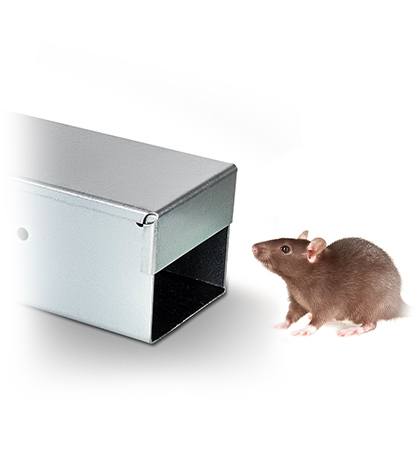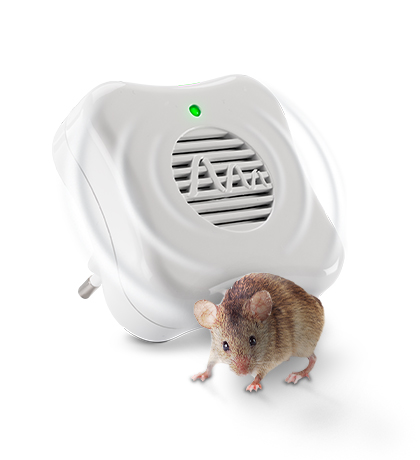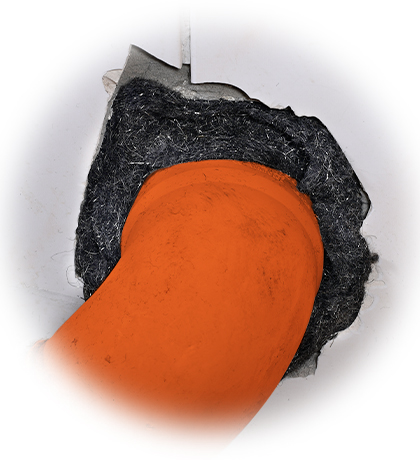
Solar Animal Repeller | adjustable ultrasound repellent | 5 operating modes



Mouse Repellent Duo | ultrasonic vermin repellent

Pest control plus | vermin & mouse repellent | ultrasound & electromagnetic field
Frequently Asked Questions
For indoor use, we recommend classic snap traps made of plastic or wood, as well as live traps with a cage mechanism. They are compact, hygienic, and can be discreetly placed along walls or under furniture. In households with children or pets, use a bait box or our Mouse-Away trap with safety housing that guards from the strike bar.
Spreadable, strong-smelling baits such as peanut butter or hazelnut spread are the most effective. Bacon, cheese, or oats can also be successful. It's important that the bait is securely attached and cannot be removed without triggering the trap. Always consider the trap's design. Some traps are better suited for solid baits (e.g., those with a spike for attaching the attractant), while others have a bait cup and are optimized for spreadable baits.
A live trap lures the mouse into a small chamber using bait. Once the mouse enters, a mechanism is triggered that closes the entrance. The animal remains unharmed and can later be released outside the house.
Place traps where mice are active – for example, along walls, under kitchen units, behind cabinets, or in the basement. Position the trap parallel to the wall, as mice rarely cross open spaces.
Live traps should be checked at least every eight hours to avoid stress or injury to the mouse – shorter intervals are better. Snap traps must be checked regularly and emptied and reset immediately after a catch.
Yes. Live traps catch the mouse without harming it. They are especially suitable for households that prioritize animal welfare. Important: the mouse should be released as quickly and as far away as possible.
Buying Mouse Traps – Different types
Basically, one must distinguish between kill traps and live traps for mouse control. Within these categories, there is a wide range of different designs.
Snap Traps against Mice
Snap mouse traps feature a striking bar, usually attached to the end of a spring that is tensioned. The mouse must trigger a release mechanism in order for the bar to snap shut. The animal is lured with a bait and prompted to activate the mechanism. It is important that the mouse trap closes strongly enough to prevent prolonged suffering. Particularly convenient are our pre-baited traps, which already come with a non-toxic monitoring bait – ready to use immediately.
For catching field mice, there are special traps designed to be placed directly in the animals’ underground tunnels. You can find our field mice and vole traps here.
Humane Live Traps
Our selection of live traps is especially diverse, offering many different mechanisms and designs. There are affordable, small traps as well as spacious ones that provide the animals with more room and less stress. Our walk-the-plank and roller traps are multi-catch devices, which can catch several mice in one night. Tunnel and tube traps are especially attractive to rodents due to their shape.
But what makes a good live trap? First and foremost, it must be designed so that the rodents are not injured when the trap shuts. A common problem with traps from other manufacturers is that the mouse’s tail gets caught. We prevent this! Our plastic live mouse trap has a door that closes gently without force. Our cage traps feature a small gap under the door.
Our live traps also provide plenty of space for bait, so that the mouse can be kept occupied with food. Ideally, fruit or water should also be offered to provide the captured animal with fluids.
Mouse Repellents: Driving Mice Away with Ultrasound
The most animal-friendly and effective solution is to prevent mice from entering the house in the first place. Devices such as our Mobile Mouse Repellent emit ultrasound to disturb rodents. Unlike humans, the animals can hear these high frequencies – in fact, they communicate with each other using ultrasonic sounds. That’s why the tones irritate them. People are not affected by the devices.
This makes ultrasound a popular preventive measure against mouse infestations. Repel rodents without poison or violence. Prevention and deterrence instead of killing!
Wood or Plastic Mouse Traps – the differences explainedWooden mouse traps may look more eco-friendly at first glance since they are made from a renewable resource. However, wooden snap traps also have a drawback: the mechanism is quite basic. Unlike plastic traps, they lack a locking tension bar, which makes handling less convenient.
Plastic traps are easier to use: the caught animal can be removed hygienically by pressing the tension bar, which lifts the striking bar. With a wooden trap, one must lift the striking bar directly – often considered unpleasant. Many people discard them after a single use. Those who prefer to reuse their traps are better off with plastic versions.
On the other hand, live traps made of wood and metal can actually be more durable than plastic traps, since rodents will try to gnaw their way out. Our live trap’s metal grid is too hard to chew through, making it very secure. Plastic traps, however, are easier to clean.
With our roller and plank traps, several animals can be caught at once. Each trap has its own advantages, and the “best” trap depends on your specific situation and needs.
Also note: traps should be properly sized. Rat traps are often unsuitable for mice because their trigger sensitivity is adjusted for larger animals.
The Best Bait for Mouse Traps
Our favourites:
- Peanut butter
- Hazelnut spread
- Chocolate or candy bars, preferably with nuts
Mice are omnivores, so many types of food can be used to attract them. Classic lures include cheese and bacon, which can be attached to some snap traps. However, in our experience, the most effective baits are peanut butter and hazelnut spread – rodents love them.
That is why most of our traps now feature a bait holder optimized for spreadable baits. Gummy bears are also popular as solid bait. When using chocolate spread in a trap with a bait spike, we recommend dipping a raisin into the spread and then attaching it – this works well.
Checking live mouse traps – the best interval
The German Environment Agency recommends checking live traps at least every 8 hours. If only mice are being caught, this is sufficient. However, we recommend more frequent checks.
Preventing Mice from Dying in Live Traps
If animals die in a trap, it is often because they are not mice but shrews. They are insectivores (like moles), not rodents (like mice).
Shrews have extremely fast metabolisms and are constantly searching for food. They can starve within just a few hours, with heart rates of up to 1,000 beats per minute, making them highly sensitive to stress.
While mice are plant-eating rodents, shrews feed mainly on animal protein and are particularly attracted to bait such as liver sausage. Still, they can also be caught by the same bait types used for mice.
To ensure no shrew suffers, live traps should be checked every two hours. Ample bait should be provided, and for hydration, water (for example, using the container in our Mouse Live Trap XL 2.0) or fruit should be included.
Catching Mice Humanely with Live Traps
Live traps are becoming increasingly popular – and rightly so. However, snap traps can also be useful in mouse control. Many people forget to check their traps regularly; in such cases, snap traps can be more humane. Which solution is “kinder” ultimately depends on the user.
Placing Mouse Traps Correctly
When fighting mice, it is important to consider their behaviour. Rodents usually move along walls where they feel safe. Therefore, the best place to set a trap is along a wall.
For optimal effectiveness of snap traps, always place two traps against the wall, each facing in opposite directions. This way, mice are likely to trigger the trap head-on, where the bar has the most force.
Places of Rodent Infestation
Mice may need to be controlled or driven away in many locations:
- Indoors
- Outdoors
- In the garage
- In the attic
- In the shed
- In the pantry
Rodent problems are especially common in autumn and winter, when the animals seek warm, sheltered places.
Recognising Mouse Infestations Indoors
Typical signs include scratching noises inside walls or in the attic, strong odours from urine, gnaw marks on furniture or food in kitchens and pantries, as well as mouse droppings or dirt along their paths. If you notice these signs, immediate action is required.
Damage Caused by Mice
Mice can cause serious damage in homes and gardens. Indoors, they gnaw on electrical cables and devices, leading to short circuits and even potential fires – both dangerous and costly. Preventive use of ultrasonic devices and–if needed–traps is essential for safety.
Mouse in the House – What to Do?
Alongside traps or poison baits, it is crucial to identify how the pests are entering the house. Often they squeeze through tiny gaps or holes, which must be located and sealed. To prevent mice from gnawing through sealing material, we recommend using our Rodent Barrier Steel Wool.
Quick action is necessary, as mice reproduce rapidly. They are also a hygiene and health risk, capable of spreading diseases such as hantavirus. Always wear gloves and a protective mask when handling mice or their droppings. Traps and repellents serve your personal protection.
Using Poison Safely with Bait Stations
For safer use of traps and poison baits, GARDIGO offers various bait boxes. Poison should never be placed openly – this protects children and pets. It is also a good idea to place snap traps inside a container that prevents children from reaching in, such as our bait station.
Mouse Traps as Decoration
Mouse traps are also popular for decorating, such as for money gifts. For these and other decorative ideas, GARDIGO offers mouse traps in bright colours.


